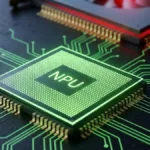Researchers have developed tiny electronic devices that can be used in medical implants and which melt right away when they’re finished with.

Other applications, say the team, include environmental monitors, such as wireless sensors that can be used after a chemical spill, and even consumer electronic systems or sub-components that can be thrown on the compost heap when they’re done with.
“From the earliest days of the electronics industry, a key design goal has been to build devices that last forever – with completely stable performance,” says John Rogers of the University of Illinois.
“But if you think about the opposite possibility – devices that are engineered to physically disappear in a controlled and programmed manner – then other, completely different kinds of application opportunities open up.”
Rogers’ team has been able to develop tiny, yet high performance electronic systems out of ultrathin sheets of silicon – so thin that they completely dissolve in a few days when immersed in biofluids.
They’ve built transient transistors, diodes, wireless power coils, temperature and strain sensors, photodetectors, solar cells, radio oscillators and antennas, and even simple digital cameras, all of which can dissolve in tiny quantities of water.
The devices are encapsulated in silk, and it’s the structure of this silk that determines its rate of dissolution – anywhere from minutes to years.
“The different applications that we are considering require different operating time frames,” says Rogers.
“A medical implant that is designed to deal with potential infections from surgical site incisions is only needed for a couple of weeks. But for a consumer electronic device, you’d want it to stick around at least for a year or two. The ability to use materials science to engineer those time frames becomes a critical aspect in design.”
The team’s now working on refining its devices for specific applications, and is working with a semiconductor foundry to check out the possibilities for high-volume manufacturing.
“It’s a new concept, so there are lots of opportunities, many of which we probably have not even identified yet,” says Rogers. “We’re very excited. These findings open up entirely new areas of application, and associated directions for research in electronics.”






